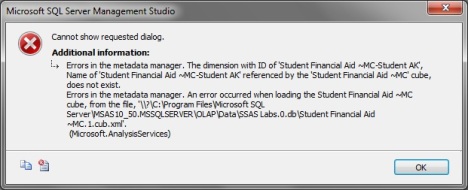.NET Framework 4 Client Profile (32-bit) – silent repair
%windir%\Microsoft.NET\Framework\v4.0.30319\SetupCache\Client\setup.exe /repair /x86 /x64 /ia64 /parameterfolder Client /q /norestart
.NET Framework 4 Client Profile (32-bit) – unattended repair
%windir%\Microsoft.NET\Framework\v4.0.30319\SetupCache\Client\setup.exe /repair /x86 /x64 /ia64 /parameterfolder Client /passive/norestart
.NET Framework 4 Client Profile (32-bit) – silent uninstall
%windir%\Microsoft.NET\Framework\v4.0.30319\SetupCache\Client\setup.exe /uninstall /x86 /x64 /parameterfolder Client /q /norestart
.NET Framework 4 Client Profile (32-bit) – unattended uninstall
%windir%\Microsoft.NET\Framework\v4.0.30319\SetupCache\Client\setup.exe /uninstall /x86 /x64 /parameterfolder Client /passive /norestart
.NET Framework 4 Client Profile (64-bit) – silent repair
%windir%\Microsoft.NET\Framework64\v4.0.30319\SetupCache\Client\setup.exe /repair /x86 /x64 /ia64 /parameterfolder Client /q /norestart
.NET Framework 4 Client Profile (64-bit) – unattended repair
%windir%\Microsoft.NET\Framework64\v4.0.30319\SetupCache\Client\setup.exe /repair /x86 /x64 /ia64 /parameterfolder Client /passive /norestart
.NET Framework 4 Client Profile (64-bit) – silent uninstall
%windir%\Microsoft.NET\Framework64\v4.0.30319\SetupCache\Client\setup.exe /uninstall /x86 /x64 /parameterfolder Client /q /norestart
.NET Framework 4 Client Profile (64-bit) – unattended uninstall
%windir%\Microsoft.NET\Framework64\v4.0.30319\SetupCache\Client\setup.exe /uninstall /x86 /x64 /parameterfolder Client /passive /norestart
.NET Framework 4 Full (32-bit) – silent repair
%windir%\Microsoft.NET\Framework\v4.0.30319\SetupCache\Client\setup.exe /repair /x86 /x64 /ia64 /parameterfolder Client /q /norestart
.NET Framework 4 Full (32-bit) – unattended repair
%windir%\Microsoft.NET\Framework\v4.0.30319\SetupCache\Client\setup.exe /repair /x86 /x64 /ia64 /parameterfolder Client /passive /norestart
.NET Framework 4 Full (32-bit) – silent uninstall
%windir%\Microsoft.NET\Framework\v4.0.30319\SetupCache\Extended\setup.exe /uninstall /x86 /x64 /ia64 /parameterfolder Extended /q /norestart
%windir%\Microsoft.NET\Framework\v4.0.30319\SetupCache\Client\setup.exe /uninstall /x86 /x64 /parameterfolder Client /q /norestart
.NET Framework 4 Full (32-bit) – unattended uninstall
%windir%\Microsoft.NET\Framework\v4.0.30319\SetupCache\Extended\setup.exe /uninstall /x86 /x64 /ia64 /parameterfolder Extended /passive /norestart
%windir%\Microsoft.NET\Framework\v4.0.30319\SetupCache\Client\setup.exe /uninstall /x86 /x64 /parameterfolder Client /passive /norestart
.NET Framework 4 Full (64-bit) – silent repair
%windir%\Microsoft.NET\Framework64\v4.0.30319\SetupCache\Client\setup.exe /repair /x86 /x64 /ia64 /parameterfolder Client /q /norestart
.NET Framework 4 Full (64-bit) – unattended repair
%windir%\Microsoft.NET\Framework64\v4.0.30319\SetupCache\Client\setup.exe /repair /x86 /x64 /ia64 /parameterfolder Client /passive /norestart
.NET Framework 4 Full (64-bit) – silent uninstall
%windir%\Microsoft.NET\Framework64\v4.0.30319\SetupCache\Extended\setup.exe /uninstall /x86 /x64 /ia64 /parameterfolder Extended /q /norestart
%windir%\Microsoft.NET\Framework64\v4.0.30319\SetupCache\Client\setup.exe /uninstall /x86 /x64 /parameterfolder Client /q
.NET Framework 4 Full (64-bit) – unattended uninstall
%windir%\Microsoft.NET\Framework64\v4.0.30319\SetupCache\Extended\setup.exe /uninstall /x86 /x64 /ia64 /parameterfolder Extended /passive /norestart
%windir%\Microsoft.NET\Framework64\v4.0.30319\SetupCache\Client\setup.exe /uninstall /x86 /x64 /parameterfolder Client /passive /norestart
Fixed incorrect command lines for uninstall of the .NET Framework 4 extended.
